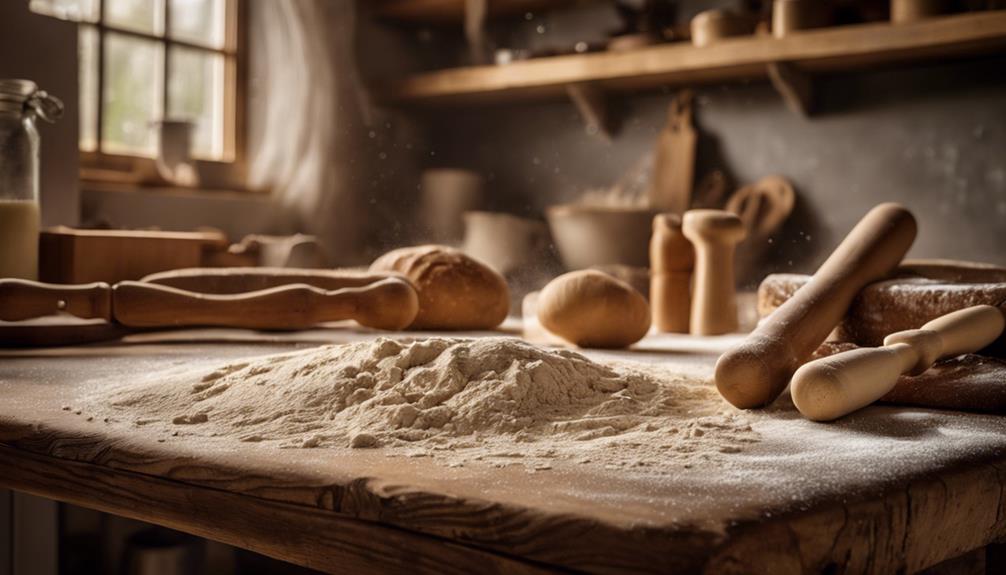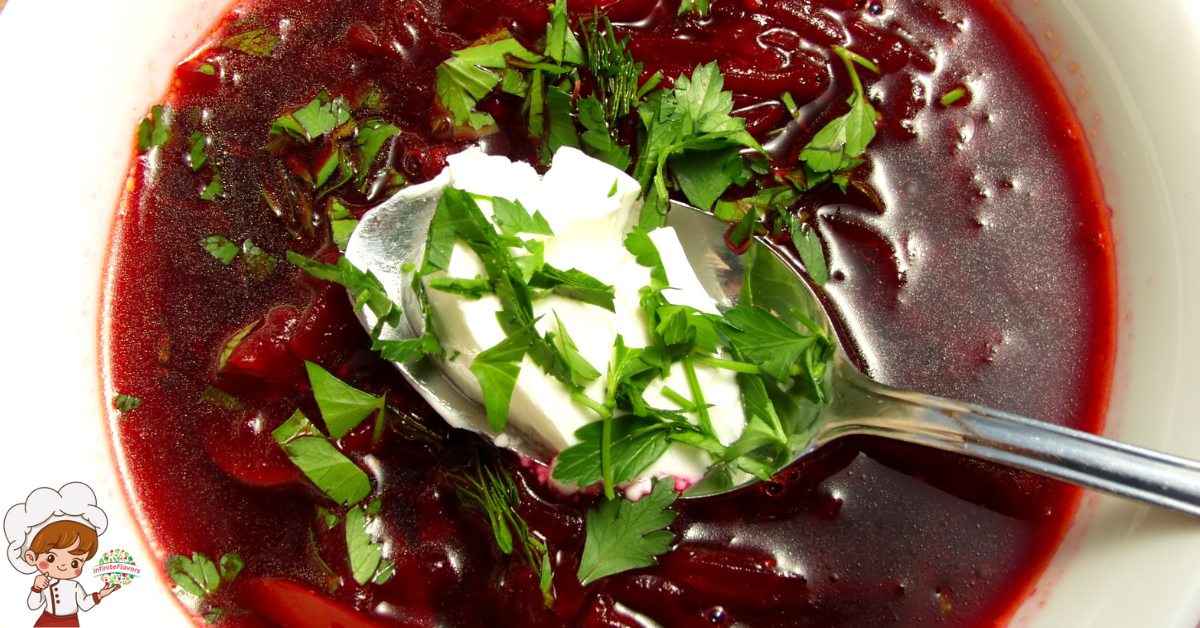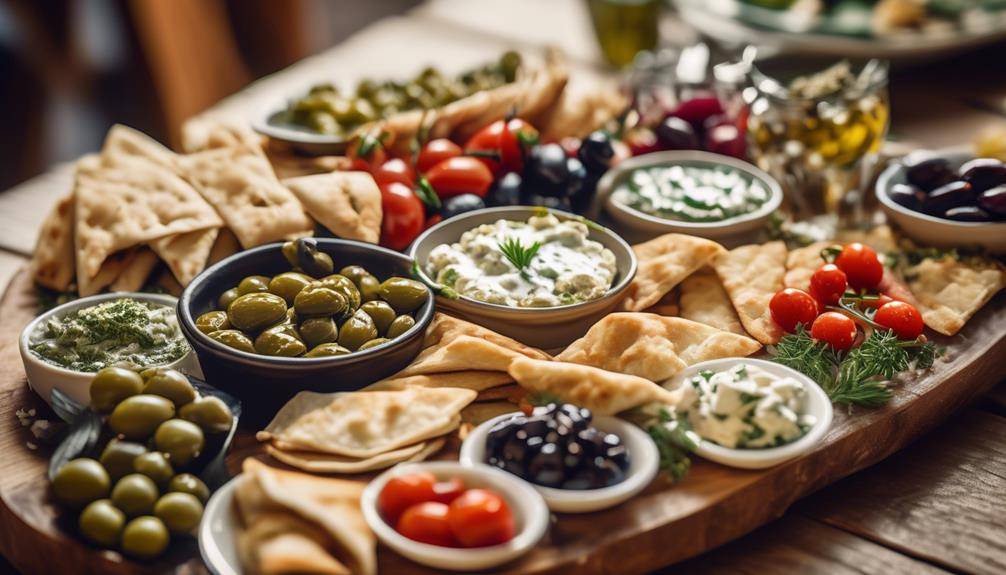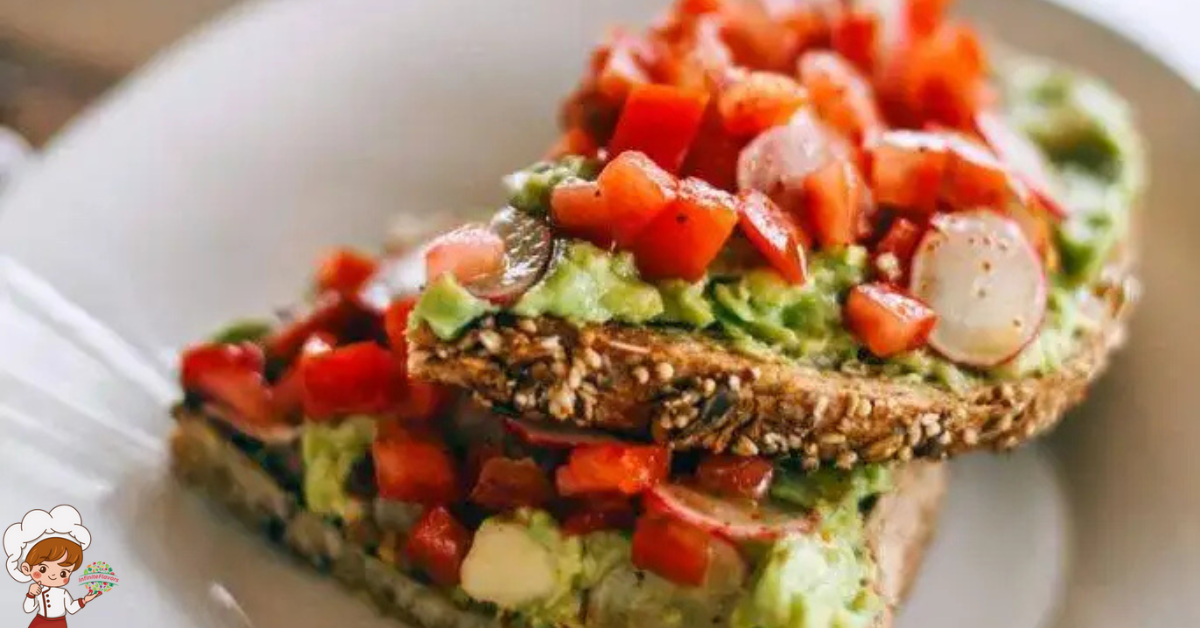The Best Rolling Pins For Bread Dough

The Best Rolling Pins For Bread Dough; When you’re looking to achieve the perfect texture in your bread dough, a good rolling pin is key. They guarantee even thickness and enhance the quality of your baked goods. You have a variety of options, from traditional wooden pins to elegant marble and flexible silicone choices. Each type has unique benefits, like durability and non-stick properties, making your dough easier to handle. Remember to take into account the right techniques and avoid common mistakes to get the best results. If you want to explore more tips and types of rolling pins, keep going to elevate your baking experience!
Importance of Rolling Pins
Rolling pins are essential tools in any baker’s kitchen, playing a crucial role in achieving the perfect dough texture. Their importance can’t be overstated, as they help you roll out dough evenly, ensuring consistent thickness for your bread. This uniformity allows for better baking results, whether you’re making baguettes or focaccia.
Understanding rolling pin history adds to your appreciation of this tool. Dating back to ancient civilizations, the rolling pin has evolved from simple wooden rods to more sophisticated designs. Various cultures adapted its use, leading to the diverse range of rolling pins we see today. Each design reflects the culinary practices of its time, showcasing how integral this tool has been in baking traditions across the globe.
When it comes to rolling pin materials, your choice can greatly affect your baking experience. Wooden rolling pins are traditional favorites, known for their durability and natural grip. They absorb flour better, preventing sticking. However, you might also consider marble or silicone options, which offer unique benefits. Marble retains cold temperatures, ideal for pastry dough, while silicone provides a non-stick surface that’s easy to clean.
Types of Rolling Pins
Choosing the right rolling pin can greatly enhance your baking experience, as different types offer varied benefits depending on your needs. For instance, if you’re looking for something easy to handle, ergonomic rolling pins are designed to fit comfortably in your hand, making them a joy to use for extended periods.
If you appreciate aesthetics, decorative rolling pins can add a unique touch to your kitchen. These often feature intricate designs that imprint patterns into the dough, making your baked goods visually appealing. Vintage rolling pins also have a charm of their own; they’re not just functional but can also serve as beautiful kitchen décor.
For serious bakers, professional rolling pins provide superior durability and performance. Typically made from high-quality materials, these rolling pins can withstand heavy use and offer precision in flattening dough. On the other hand, ceramic rolling pins are worth considering, as they provide an excellent surface for rolling out dough without sticking.
If space is an issue, collapsible rolling pins can be a lifesaver. They easily fit into drawers or cabinets, ensuring your kitchen remains clutter-free. Additionally, color-coded rolling pins help you achieve consistent dough thickness, as each color corresponds to a specific measurement.
When selecting a rolling pin, consider the rolling pin materials and how they align with your baking style. By understanding the different types of rolling pins available, you’ll be better equipped to enhance your culinary creations.
Wooden Rolling Pins
When it comes to rolling pins, wooden ones stand out for their durability and classic appeal. You’ll appreciate their natural ability to distribute pressure evenly, making dough preparation smoother. Plus, understanding the care and types of wood can help you choose the best rolling pin for your baking needs.
Benefits of Wooden Rolling Pins
Wooden rolling pins offer several advantages that make them a favorite among bakers. One key benefit is their durability comparison to other materials. While metal or plastic pins may bend or warp over time, wood is incredibly sturdy and can last for years with proper care. This longevity means you won’t have to replace your rolling pin frequently, making it a cost-effective choice.
Another significant advantage is heat retention. Wooden rolling pins tend to stay cooler than their metal counterparts, which helps prevent the dough from warming up too quickly. This is particularly important when working with sensitive doughs, like pastry or bread, where maintaining a consistent temperature can make all the difference in texture and rise.
In addition, the natural surface of wooden rolling pins provides a slight grip, helping you roll out dough evenly without sticking. This feature allows for better control, ensuring you achieve the desired thickness every time. So, if you’re serious about baking, investing in a wooden rolling pin can enhance your experience and improve your results. You’ll discover that it’s a versatile tool that truly stands the test of time.
Care and Maintenance Tips
To keep your wooden rolling pin in top shape for years to come, regular care and maintenance are essential. First, focus on cleaning techniques. After each use, simply wipe your rolling pin with a damp cloth to remove any dough residue. Avoid soaking it in water, as this can warp the wood. If you need a deeper clean, use a mild soap solution, but make sure to rinse it well and dry it immediately to prevent moisture damage.
Next, consider your storage solutions. Store your rolling pin in a cool, dry place away from direct sunlight, which can cause fading and cracking. If you have space, consider hanging it on a rack or placing it in a drawer with a soft cloth to prevent scratches. It’s also a good idea to occasionally apply a food-safe mineral oil to keep the wood hydrated and maintain its beautiful finish.
Types of Wood Used
There are several types of wood that are commonly used for crafting rolling pins, each offering unique benefits. Maple wood is a popular choice due to its moisture resistance and durability, making it ideal for bread dough. Cherry wood provides a beautiful rich color and distinct grain patterns, adding a touch of elegance to your kitchen. If you’re looking for sustainable options, bamboo rolling pins are an excellent choice as they’re eco-friendly and lightweight.
Beech wood is known for its hardness, which makes it excellent for rolling out tough doughs. In a hardness comparison, beech ranks higher than walnut wood, which is softer but offers a lovely dark hue and smooth finish. Walnut’s grain patterns can be quite striking, making it a favorite for those who appreciate aesthetics.
Cost differences can also influence your choice; for instance, bamboo tends to be more affordable, while cherry and walnut may come at a premium due to their beauty and unique properties. Ultimately, selecting the right wood for your rolling pin depends on your baking needs and personal preferences.
Marble Rolling Pins
Marble rolling pins offer unique benefits that can elevate your baking experience. They stay cool during use, making them perfect for working with delicate doughs. Let’s explore how to care for them and choose the right size for your kitchen needs.
Benefits of Marble Pins
When it comes to rolling pins, marble options stand out for several compelling reasons. First, you’ll appreciate the marble durability; these pins are incredibly strong and can withstand heavy use without showing signs of wear. Unlike wooden pins that may warp or crack over time, marble remains robust, ensuring that you have a reliable tool in your kitchen for years to come.
Another significant benefit is marble aesthetics. The elegant look of a marble rolling pin can elevate your kitchen decor, making it not just a tool but also a statement piece. The smooth, cool surface is not only beautiful but also functional, as it helps to keep your dough from sticking, providing an effortless rolling experience.
Additionally, marble’s natural temperature retention means your dough stays cooler while you work, which is especially beneficial for sensitive pastries. You’ll find that this quality can enhance the texture of your baked goods. Overall, if you’re looking for a rolling pin that combines functionality with style, a marble option is definitely worth considering.
Care and Maintenance Tips
To keep your marble rolling pin in top shape, regular care and maintenance are essential. Start by using the right cleaning techniques. After each use, rinse your rolling pin with warm water and a mild dish soap to remove any dough residue. Avoid soaking it, as prolonged exposure to water can damage the marble. Instead, use a soft sponge or cloth to gently scrub the surface. For tougher stains, a paste of baking soda and water works wonders—just apply it, let it sit for a few minutes, and then rinse.
When it comes to storage solutions, you’ll want to keep your marble rolling pin safe from scratches and damage. Store it in a designated area, ideally wrapped in a soft cloth or inside a drawer. Avoid stacking heavy items on top of it or placing it in damp environments, as this could lead to cracks or discoloration. By following these simple care tips, you’ll guarantee that your marble rolling pin remains a beautiful and functional tool in your kitchen for years to come.
Choosing the Right Size
After ensuring your marble rolling pin is well cared for, the next step is to contemplate the size that best fits your baking needs. Choosing the right rolling pin dimensions can greatly affect your baking experience. Marble rolling pins typically come in various lengths, generally ranging from 18 to 22 inches. If you’re preparing large batches of dough or working with pizza or bread, a longer pin will provide you with the leverage needed for ideal rolling techniques.
Conversely, if you’re often baking smaller items like pastries or cookies, a shorter rolling pin may suit you better, as it offers more control and precision.
Think about the thickness of the dough you usually work with, too. A wider rolling pin can help you achieve an even thickness, which is vital for consistent baking results. Finally, consider your storage space; a larger pin may be challenging to store if you have limited kitchen space. By carefully evaluating your rolling pin dimensions in relation to your baking habits, you’ll find a marble rolling pin that enhances your culinary creations.
Silicone Rolling Pins
Silicone rolling pins are often favored by bakers for their non-stick properties and easy cleanup. Unlike traditional wooden or metal pins, silicone rolling pins offer a flexible surface that helps prevent dough from sticking. This quality makes it easier for you to roll out various types of dough, from pie crusts to bread dough, without the frustration of tearing or sticking.
One of the standout features of silicone rolling pins is their silicone durability. They resist cracking and warping, ensuring they last through countless baking sessions. You won’t have to worry about replacing your rolling pin anytime soon. Plus, the lightweight design makes them easy to handle, so you can roll out dough with precision and control.
When it comes to maintenance, silicone rolling pins shine. After you’ve finished rolling out your dough, simply wipe them clean with a damp cloth or toss them in the dishwasher. You won’t spend extra time scrubbing or soaking your tools, which is a bonus when you’re in the thick of baking.
Another advantage is that silicone rolling pins come in various colors and designs, allowing you to choose one that complements your kitchen decor or personal style. Whether you’re a beginner or an experienced baker, a silicone rolling pin can make your dough preparation smoother and more enjoyable. Embrace the convenience and efficiency of silicone rolling pins, and elevate your baking experience today!
Adjustable Rolling Pins
When you use an adjustable rolling pin, you gain the flexibility to roll dough to your desired thickness effortlessly. Choosing the right size is essential for your baking needs, and proper maintenance will keep your rolling pin in great shape. Let’s explore the benefits of adjustability and how to care for your pin to guarantee perfect results every time.
Benefits of Adjustability
Adjustable rolling pins can truly transform your baking experience. With their adjustable features, you can easily customize the thickness of your dough, ensuring perfect rolling precision every time. Instead of relying on guesswork or stacking multiple rolling pins, you can simply set the desired thickness and get straight to rolling.
This level of control not only saves you time but also enhances the quality of your baked goods. Whether you’re making pie crusts, cookies, or bread dough, the uniformity achieved with an adjustable rolling pin is unmatched. You won’t have to worry about uneven thickness leading to inconsistent baking results.
Moreover, adjustable rolling pins allow for greater versatility in your kitchen. If you’re experimenting with different recipes or dough types, you can quickly switch settings to adapt to each requirement. This flexibility means you can tackle a wider range of baked items with confidence.
In essence, investing in an adjustable rolling pin can elevate your baking skills, helping you achieve professional-grade results at home. So, if you’re serious about your baking, consider the benefits of adjustability and enjoy the ease it brings to your kitchen tasks.
Selecting the Right Size
Choosing the right size of an adjustable rolling pin can greatly impact your baking experience. When selecting one, size considerations are crucial. A rolling pin that’s too small might not give you the leverage you need, while one that’s too large can be cumbersome to handle.
Think about the types of dough you’ll be working with. If you often make large batches of bread or pastries, a longer rolling pin can help you roll out the dough more efficiently. However, if you typically work with smaller quantities, a shorter pin might be more comfortable and easier to store.
Adjustable rolling pins allow you to control dough thickness, which is essential for achieving consistent results. Look for models that offer various thickness settings, so you can easily adjust based on your recipe requirements. This flexibility is especially helpful when you’re trying to master different types of bread, as each may demand a specific thickness for ideal texture and flavor.
Ultimately, choosing the right size not only enhances your baking process but also guarantees you achieve the perfect dough thickness every time. So, consider your needs and make the right choice for your kitchen.
Maintenance and Care Tips
To keep your adjustable rolling pin in top shape, it’s essential to clean and store it properly after each use. Start by using gentle cleaning techniques. Wipe the surface with a damp cloth immediately after rolling, avoiding soaking it in water. If there’s stubborn dough stuck, a soft sponge and mild soap will do the trick. Rinse and dry it thoroughly to prevent moisture damage.
When it comes to storage solutions, choose a cool, dry place away from direct sunlight. If your rolling pin comes with a sleeve or case, use it to protect it from dust and scratches. Avoid placing heavy items on top of it, as this can warp the shape over time.
Regularly check the adjustment mechanisms for any debris or buildup. A quick wipe with a cloth can help maintain smooth operation. If you notice any signs of wear, consider applying a food-safe mineral oil to keep the wood or material in good condition. Following these maintenance tips will guarantee your adjustable rolling pin serves you well for many baking adventures to come!
Non-Stick Rolling Pins
Non-stick rolling pins are a game changer for anyone who loves baking. With their innovative design and use of non-stick materials, these pins make rolling out dough easier and less frustrating. You won’t have to worry about your dough sticking to the pin or the baking surface, which means less cleanup and more time enjoying your baked goods.
When you’re working with sticky doughs, traditional wooden or metal rolling pins can be a hassle. They often require constant dusting with flour to prevent sticking, which can lead to dry dough. Non-stick rolling pins eliminate this issue altogether. Their smooth surfaces glide effortlessly over the dough, allowing for a more even roll. Whether you’re making bread, cookies, or pastry, you’ll appreciate how smoothly the process goes.
Another benefit of non-stick rolling pins is that they come in various shapes and sizes, catering to different preferences. You can choose a lightweight option for easy maneuverability or a heavier model for more control. Some pins even have a silicone coating, which adds a layer of protection and enhances that non-stick feature.
Using a non-stick rolling pin can elevate your baking game, giving you confidence as you roll out dough. You’ll find that the consistent thickness of your dough leads to better baking results, whether you’re creating a flaky pie crust or perfect bread rolls. Invest in a non-stick rolling pin, and you won’t look back!
Choosing the Right Size
Selecting the right size rolling pin can make a significant difference in your baking experience. When you’re working with bread dough, the size of your rolling pin should match the amount of dough you typically handle. If you often prepare large batches, a longer pin, like a 20-inch model, can help you achieve the desired dough thickness more efficiently. On the other hand, if you stick to smaller quantities, a 10 to 15-inch rolling pin may be more manageable and easier to control.
Consider your rolling techniques, too. If you prefer a more traditional approach, you might find the larger rolling pins to be advantageous, as they allow for more even pressure and coverage. However, if you often tackle intricate designs or smaller shapes, a smaller pin can give you the precision needed to navigate tight spots without overworking the dough.
Another factor to keep in mind is the type of dough you typically work with. If you often roll pastry or thin crusts, a longer pin can assist you in achieving uniform thickness. Conversely, for thicker bread dough, a shorter pin might provide better control, helping you avoid over-flattening.
Ultimately, the right size rolling pin balances comfort and functionality. By selecting a pin that suits your baking habits, you’ll enhance your rolling techniques and achieve the perfect dough thickness every time.
Weight Considerations
When choosing a rolling pin, weight plays an essential role in how easily you can work with dough. Heavier pins can help you roll out thick dough with less effort, while lighter pins offer more control and precision for delicate pastries. Understanding these advantages will help you select the right pin for your baking needs.
Heavier Pins Advantages
Although many bakers may gravitate toward lighter rolling pins for ease of use, heavier pins offer distinct advantages that can greatly improve your dough handling. One of the primary heavier pin benefits is the added weight, which allows you to apply more pressure without much effort. This means less strain on your wrists and arms as you roll out your dough.
Using a heavier pin can enhance your dough rolling techniques, making it easier to achieve a consistent thickness. The weight helps to flatten the dough evenly, reducing the need for excessive back-and-forth motion. This can be particularly beneficial when working with tougher dough, like bread or pizza, where you want to maintain the integrity of the gluten structure.
Moreover, the stability of a heavier pin provides better control during the rolling process. You won’t need to worry as much about the pin slipping or bouncing off the dough, allowing you to focus on achieving the perfect shape. If you’re serious about your baking, investing in a heavier rolling pin can elevate your skills and improve your overall results. You’ll notice the difference in your dough’s texture and consistency, making your baking experience more enjoyable.
Light Pins Benefits
Light rolling pins bring several benefits that can make your baking experience more enjoyable and effortless. One of the most significant lightweight benefits is ease of use. These pins are easier to lift and maneuver, allowing you to roll out dough without straining your wrists or arms. Whether you’re preparing pastry or bread dough, a light pin gives you better control, making dough handling smoother.
Additionally, lightweight rolling pins are perfect for delicate doughs that require a gentle touch. With less weight, you can apply just the right amount of pressure, preventing your dough from becoming tough or overworked. This is especially beneficial when working with flaky pastry or pasta.
Moreover, light rolling pins often come in a variety of materials, such as wood or silicone, allowing you to choose one that best suits your style. Their manageable weight means you can roll out larger pieces of dough with less effort, making them ideal for bigger baking projects.
Care and Maintenance
To keep your rolling pins in top shape, regular care and maintenance are important. Different rolling pin materials require specific approaches, so it’s essential to know what you’re working with. For instance, wooden pins can absorb moisture and odors, so hand wash them with mild soap and warm water after each use. Avoid soaking them, as this can lead to warping. To maintain their finish, occasionally rub them with food-safe mineral oil.
If you have a marble or metal rolling pin, you can generally wash them in warm soapy water too. Just be sure to dry them thoroughly afterward to prevent rust or staining. Some rolling pin shapes, like tapered or French-style pins, may have more intricate designs that can trap dough. Clean these carefully, using a soft brush or cloth to make sure every crevice is clear of residue.
Storing your rolling pins properly also plays an important role in their longevity. Keep them in a dry, cool place, and avoid stacking heavy items on top to prevent bending or cracking. If your pin has a non-stick coating, be cautious not to scratch it while cleaning.
Techniques for Using Rolling Pins
Mastering the art of using a rolling pin can elevate your baking experience considerably. To achieve the perfect dough thickness, start with proper surface preparation. Lightly flour your countertop or use a silicone mat to prevent sticking. Different flour types can affect the dough’s texture, so choose the right one for your recipe.
When it comes to rolling techniques, begin at the center of the dough and roll outward. This method helps maintain an even thickness and prevents the edges from becoming too thin. If you notice the dough sticking, sprinkle a little more flour on the surface or the dough itself. Remember, letting the dough rest can be essential; it relaxes the gluten, making it easier to roll out and resulting in better baking consistency.
Effective pastry handling is key, especially when incorporating ingredients. Roll out your dough to the desired thickness, and if you’re adding fillings or toppings, make certain they’re evenly distributed. You can gently fold the dough over the filling before rolling it out again, allowing for seamless ingredient incorporation.
Lastly, keep in mind that practice makes perfect. Don’t hesitate to experiment with different rolling techniques and adjust your approach based on the dough’s behavior. By honing these skills, you’ll not only improve your rolling pin usage but also enhance the overall quality of your baked goods. Happy baking!
Common Mistakes to Avoid
Even with the best techniques in mind, it’s easy to make mistakes when using a rolling pin. One common pitfall is applying too much pressure. Rolling dough too aggressively can lead to uneven thickness and tough bread. Instead, use gentle, even pressure to maintain the dough’s integrity. Remember, it’s all about technique tips that help you achieve the perfect roll.
Another mistake is neglecting to flour your work surface and rolling pin. If your dough sticks, it can tear or stretch unevenly. Always keep a light dusting of flour handy, and don’t hesitate to reapply as needed. This simple step can save you from a sticky situation.
You might also forget to let your dough rest. Skipping this vital step can lead to elasticity that makes rolling difficult. Allowing the dough to rest relaxes the gluten, making it easier to roll out.
Additionally, many people roll their dough too thin. While you want a nice, even layer, going too thin can compromise the bread’s texture. Aim for a thickness that allows for proper rise and structure.
Lastly, don’t overlook the importance of rotating your dough as you roll. Failing to do so can create an uneven shape. By turning the dough, you guarantee uniform thickness throughout.
Rolling Pin Accessories
A rolling pin isn’t just a simple kitchen tool; it can be enhanced with various accessories that elevate your baking experience. These accessories can make a significant difference in how you roll out your dough, ensuring consistent thickness and ease of use.
One popular accessory is the thickness guide. This tool attaches to your rolling pin and helps you achieve uniform dough thickness, whether you’re making pie crusts or bread dough. It usually comes in various sizes to accommodate different rolling pin styles and can be especially helpful for beginners.
Another handy addition is a silicone mat. This provides a non-stick surface for rolling out dough while keeping your countertops clean. Silicone mats are easy to clean and can withstand various rolling pin materials, from wood to marble.
For those who love precision, a rolling pin with measurement markings can be incredibly useful. These pins often have etched or printed measurements that help you easily gauge the size of your rolled dough, eliminating guesswork.
Lastly, consider using a rolling pin cover. This accessory helps keep your rolling pin clean and protects it from scratches or damage when not in use. It’s especially beneficial if you have a beautiful wooden rolling pin that you want to maintain.
Incorporating these accessories into your baking routine not only enhances your rolling pin’s functionality but also elevates your overall baking experience.
DIY Rolling Pin Options
Creating your own rolling pin can be a fun and rewarding project that adds a personal touch to your baking tools. You’ll find it’s not only practical but also a great way to express your creativity. Start by exploring various material alternatives. While traditional wood is popular, you can also consider using PVC pipe, metal, or even glass. Each material offers unique benefits, such as weight and ease of cleaning.
Next, think about custom designs that reflect your personality or baking style. You might carve or etch patterns into a wooden pin, which can help create beautiful imprints in your dough. If you’re going for a more modern look, consider painting or wrapping a plain rolling pin with decorative tape or fabric. This way, you’ll have a tool that’s not just functional but also visually appealing.
When you’re ready to build, confirm you have the right tools. A saw for cutting, sandpaper for smoothing edges, and a drill for making handles will be essential. If you choose heavier materials, make sure your design remains practical for everyday use.
Don’t forget to finish your rolling pin properly, especially if you’re using wood. A food-safe sealant can protect your creation and confirm it lasts for years. With a little effort and creativity, you’ll have a DIY rolling pin that’s not only useful in the kitchen but also a conversation starter when friends and family come over.
Enhancing Your Baking Experience
To truly elevate your baking experience, consider how the right tools and techniques can make a significant difference. A quality rolling pin isn’t just an accessory; it’s an indispensable part of achieving the perfect dough consistency. When you choose a rolling pin that suits your style—whether it’s a traditional wooden pin or a sleek marble one—you set the stage for better results.
Start by mastering essential baking techniques. Confirm to flour your surface and the rolling pin lightly to prevent sticking. This simple step helps maintain your dough’s integrity and guarantees even thickness. As you roll, apply consistent pressure, moving from the center outward. This method helps create a uniform thickness, which is vital for even baking.
Pay attention to your dough consistency as well. If the dough feels too sticky, a little extra flour can help. Conversely, if it’s too dry and crumbly, a splash of water or a bit of oil can bring it back to life. By fine-tuning these details, you’ll notice a huge improvement in your final product.
Don’t forget to experiment with different shapes and sizes of rolled dough. Whether you’re making pizza, pastries, or bread, the way you roll out your dough can transform your baking. By focusing on the right tools and refining your baking techniques, you’ll not only enhance your skills but also enjoy the process even more. Happy baking!
Frequently Asked Questions: The Best Rolling Pins For Bread Dough
Can I Use a Rolling Pin for Pizza Dough?
Absolutely, you can use a rolling pin for pizza dough! Different rolling pin materials, like wood or marble, can enhance your pizza dough techniques, helping you achieve that perfect thin crust you crave. Enjoy your pizza-making!
How Do I Store My Rolling Pin?
To store your rolling pin, consider its materials. Wooden ones need a dry place, while silicone can go anywhere. You can hang it or place it in a drawer, ensuring it stays clean and ready for use.
Are There Rolling Pins Specifically for Gluten-Free Dough?
Yes, there are rolling pins designed for gluten-free dough. When using gluten-free techniques, make certain you adjust your dough consistency. A smooth surface helps prevent sticking, making it easier to roll out your gluten-free creations.
What Is the Best Way to Clean a Wooden Rolling Pin?
To clean a wooden rolling pin, you can use warm, soapy water and a soft cloth. Avoid soaking it. For maintenance tips, apply food-safe mineral oil regularly to keep it in great shape.
Do Rolling Pins Come in Different Lengths?
Yes, rolling pins come in different lengths. You’ll find various styles made from different materials, such as wood, marble, and silicone. Choosing the right length and material can enhance your baking experience greatly.
Conclusion
To sum up, choosing the right rolling pin can make a world of difference in your bread-making journey. Whether you prefer the classic feel of wood, the cool touch of marble, or the flexibility of silicone, each type has its advantages. Avoid common mistakes and consider accessories to elevate your baking experience. If you’re feeling creative, try making your own rolling pin! With the right tools and techniques, you’ll soon be rolling out perfect dough every time. Happy baking!








